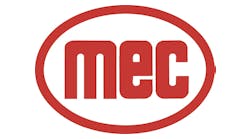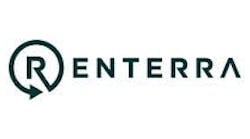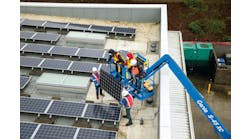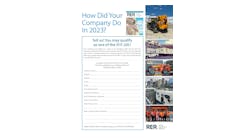Rental revenue growth rate trends accelerated to high single digits from the mid-single-digit growth seen in the fourth quarter of 2013 with average rental and utilization rates holding relatively constant, but at healthy levels, according to the latest Baird/RER rental equipment survey. The average rental growth in the first quarter of 2014 was 9 percent, an uptick from last quarter’s 7.2 percent and generally unchanged from the recent mid- to high-single-digit range. The results showed solid growth, which was even more impressive considering the harsh winter weather experienced in many regions.
More than 100 rental professionals participated in the survey, and a number of them mentioned that there were a great deal of winter-related seasonal disruptions, with the winter of 2013/14 being one of the coldest and snowiest on record in many regions. Despite the weather challenges, 2014 revenue growth was forecasted to rise to high single digits.
Planned spending on new capital equipment increased for the second straight quarter (expected up mid-single digits). End-market commentary is broadly positive, with mostly solid demand trends expected in residential and commercial construction, along with the oil and gas and road and street end markets. One participant in the survey cited “continued infrastructure growth in oilfield support areas.”
Rental rates increased 2.2 percent over last year, which was generally in line with growth rates over the past three years. Access equipment had the best pricing overall, while geographically Canada (3.4 percent), the Northeast (3.4 percent), and the West (3 percent) had the largest increases.
There is “some strength in the small tool segment,” noted one respondent, who added that homeowners seem to be more active than last year. “Construction backlog seems positive,” another participant said.
However, several smaller rental companies cited significant pricing pressure, particularly from larger firms.
While revenue increased, equipment time utilization declined slightly, with respondents citing the weather for the time disruptions, particularly in many Midwest and Northeast markets. But the outlook remains positive. “It was a rough first quarter with weather hampering construction rental,” said one participant. “Utilization is rising quickly now and we expect 2014 to be a strong year.”
Unit sales increased 2.6 percent over last year’s rate, which was a decrease from last quarter’s +6.8-percent rate. Unit sales growth has been volatile over the history of the survey, although Q114’s reading is one of the lowest data points observed.
Average fleet size growth was 4.5 percent higher than last year, which was similar to the Q413 growth rate of 5.1 percent. The year-over-year cost of new units was down compared to Q413, increasing 3.4 percent versus 4.3 percent last quarter. This is somewhat surprising to analysts considering Tier 4 final price increases that were anticipated to impact the new equipment market beginning in early 2014.
Going forward, respondents expect a 7.8-percent growth rate in 2014, which is similar to expectations in recent quarters but down from the 9-percent growth reported in the first quarter of 2014. While all primary equipment categories expect high-single-digit growth, big iron access equipment providers expect the strongest demand of 9.2 percent in 2014.
“Heavy demand continues in aerial and traffic control equipment,” according to one respondent. “Once the weather stabilizes we anticipate seeing a large increase in demand for earthmoving equipment. The unusual harsh weather has caused widespread road damage that will require repairs throughout the spring and summer.”
Planned fleet spending over the next six months also improved for the second straight quarter. Respondents expect to see a 6.1-percent year-over-year increase in fleet spending over the next six months, up from 4.1 percent last quarter and 2.5 percent two quarters ago. Small iron is expecting the largest increase in fleet spending at 8.1 percent, while big iron access and earthmoving are both expecting 5 percent increases.
The survey generated responses from approximately 100 independent equipment rental companies that generate aggregate annual revenues of around $4.2 billion. Forty-six percent of participants’ firms generate annual revenue of less than $5 million with 65 percent generating annual revenue of less than $15 million. Larger firms (>$50 million) accounted for 19 percent of respondents. The respondents are evenly distributed across the United States, with some operations in Canada and other international locations, and they primarily serve non-residential construction/industrial markets.
Robert W. Baird & Co. is an employee-owned, international wealth management, capital markets, private equity and asset management firm with offices in the United States, Europe and Asia. For more information, visit Baird’s website at rwbaird.com.
RER has covered the equipment rental industry since 1957, providing its readers with a mix of news, features and product information. For more information, visit rermag.com.





